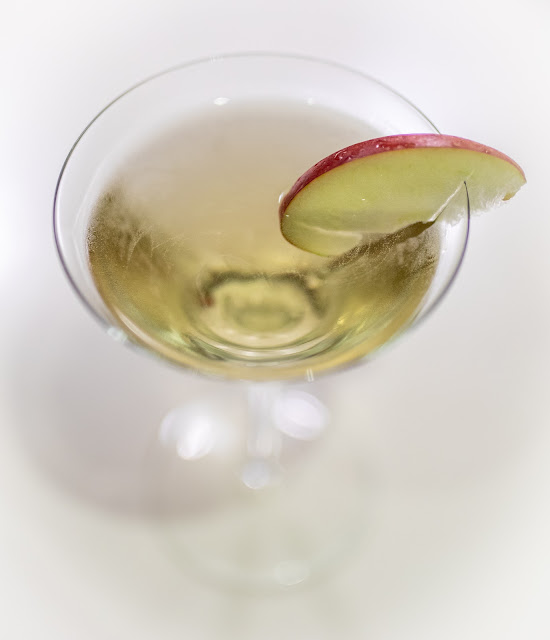Hot on the heels of his book Negroni (OK, a bit over two years later) m’colleague David Smith has published his new work, Martini, again written in conjunction with Keli Rivers. As its name suggests, it is an exploration of variations of this classic cocktail.
In its purest sense a Martini is a mixture of gin and vermouth. The iconic Dry Martini uses dry white vermouth in a ratio that greatly favours the gin. (In the early to mid-20th century there seemed to be a cult of minimising the vermouth presence, by delivering it with a pipette, atomiser or even a “Martini stone”—a stone that was kept in a vessel of vermouth. One added the stone to the glass, trusting that what vermouth clung to it would be sufficient.) The traditional garnish is either an olive or a twist of lemon peel. A Perfect Martini uses a half-and-half mix of dry white and sweet red vermouth. You don’t encounter Sweet Martinis much, though the Savoy Cocktail Book (1930) does have one that uses “Italian” (i.e. sweet red) vermouth, rather than bianco (sweet white) vermouth as you might expect.
There was as time in the 1990s and beyond when it was fashionable for any cocktail to be dubbed a “[Something] Martini”, even if its ingredients had nothing in common with those of a Martini, simply by virtue of serving it in a v-shaped “Martini glass”. To his credit, Mr Smith does tend to stick to recipes with some relation to the basic idea of a Martini, with a base spirit (usually gin or vodka, though occasionally straying into tequila or rum territory) augmented with a smaller amount of vermouth or something standing in for vermouth, such as sherry, amaro, liqueur, etc., and sometimes also small amounts of citrus juice and/or syrup. We do get a Dry Manhattan, which would seem to be a whole different ballpark, but whereas a Manhattan more often uses sweet red vermouth, here it uses dry white, so I guess it’s a sort of Martini/Manhattan hybrid. Perhaps inevitably we encounter the Espresso Martini (see my previous post) and the Porn Star Martini but, being vodka based, they are at least slightly related to a real Martini. (The Porn Star Martini features passion fruit purée and/or liqueur, lime juice and an element of vanilla, either from vanilla syrup, vanilla vodka or vanilla liqueur, such as Galliano.)
We encounter classics such as the Dirty Martini, which includes brine from the olive jar, or the Gibson, which is a Dry Martini garnished with a cocktail onion. (No mention of the Murphy, however, where the garnish is a radish. Though, as I discovered, there is a good reason for this—it adds nothing.) We get the related classic the Gimlet, gin and lime cordial, along with its modern version made with fresh lime juice and syrup. Another classic is the Pink Gin, just gin and Angostura bitters, sometimes with water, but here we instead get the Pink Gin Up, with added dry vermouth, so a cross between the Pink Gin and the Martini. We get the modern classic the Vesper, created by Ian Fleming for his 1953 James Bond novel Casino Royale, which blends gin and vodka and uses Kina Lillet instead of vermouth. (Kina Lillet hasn’t been made since the 1980s; Cocchi Americano is a useful alternative, though here David suggests a 50:50 mix of Lillet Blanc and China Martini.)
 |
| An Improved Appletini, a 2:1 mix of gin and Calvados with a little curaçao |
Red vermouth is also represented, in the form of the classic Gin and It, where the “It” is short for Italian (sweet red) vermouth, as well as the Martinez: here it is also gin and red vermouth, though using Old Tom gin (usually sweeter than London Dry) and splashes of maraschino and bitters. (It’s an old recipe, possibly even older than the Martini, and other recipes feature curaçao or both dry and red vermouths.)
We get two versions of the Cosmopolitan, the original 1930s recipe of gin, curaçao, lemon juice and raspberry syrup, and the 1980s reinvention of vodka, curaçao, lime juice and cranberry juice. We’re also treated to some modern twists, such as the Leggero Martini, essentially a Martini spliced with a G&T, or the GT Turbo, which is in a way the opposite—a GT concentrated into a Martini glass, using a “tonic syrup”. There have been commercially available tonic syrups, but David suggests making one by heating tonic water in a saucepan until reduced to a syrup.
We get the historical curiosity which is The Saint, inspired by an incident from the 1930s when the bar on the airship the Hindenburg ran out of gin, so Pauline Charteris, wife of the novelist Leslie Charteris, suggested using kirschwasser instead. And the book finishes with some seasonal ideas, such as a Halloween-appropriate version of tequila, sherry and blood orange, garnished with “fangs” of grapefruit peel, or, for New Year’s Eve, the Millionaire’s Martini, with a splash of Champagne.
Martini is a slim volume of just 64 pages, but it contains much useful, well-curated material, offering both a grounding in the essence of the Martini, as well some variations, from the traditional to the exotic (fancy a Breakfast Martini, made with a spoonful of marmalade?). There is no jokey filler here:* the recipes are actually things you might want to drink. In each case specific gins and vermouths are suggested, but the recipes are not dependent on having those to hand, and hints are offered as to what kind of flavour profile would make a suitable gin for that recipe.
Martini was published by Ryland Peters & Small on 9th May, priced at £8.99
* Even the Mr Blue Sky, which has blue curaçao for colour and is garnished by a “cloud” of white candy floss


Interesting book though it sounds like they were extremely generous in their definition of "Martini".
ReplyDeleteInevitably, otherwise it would have been a pretty short volume!
Delete